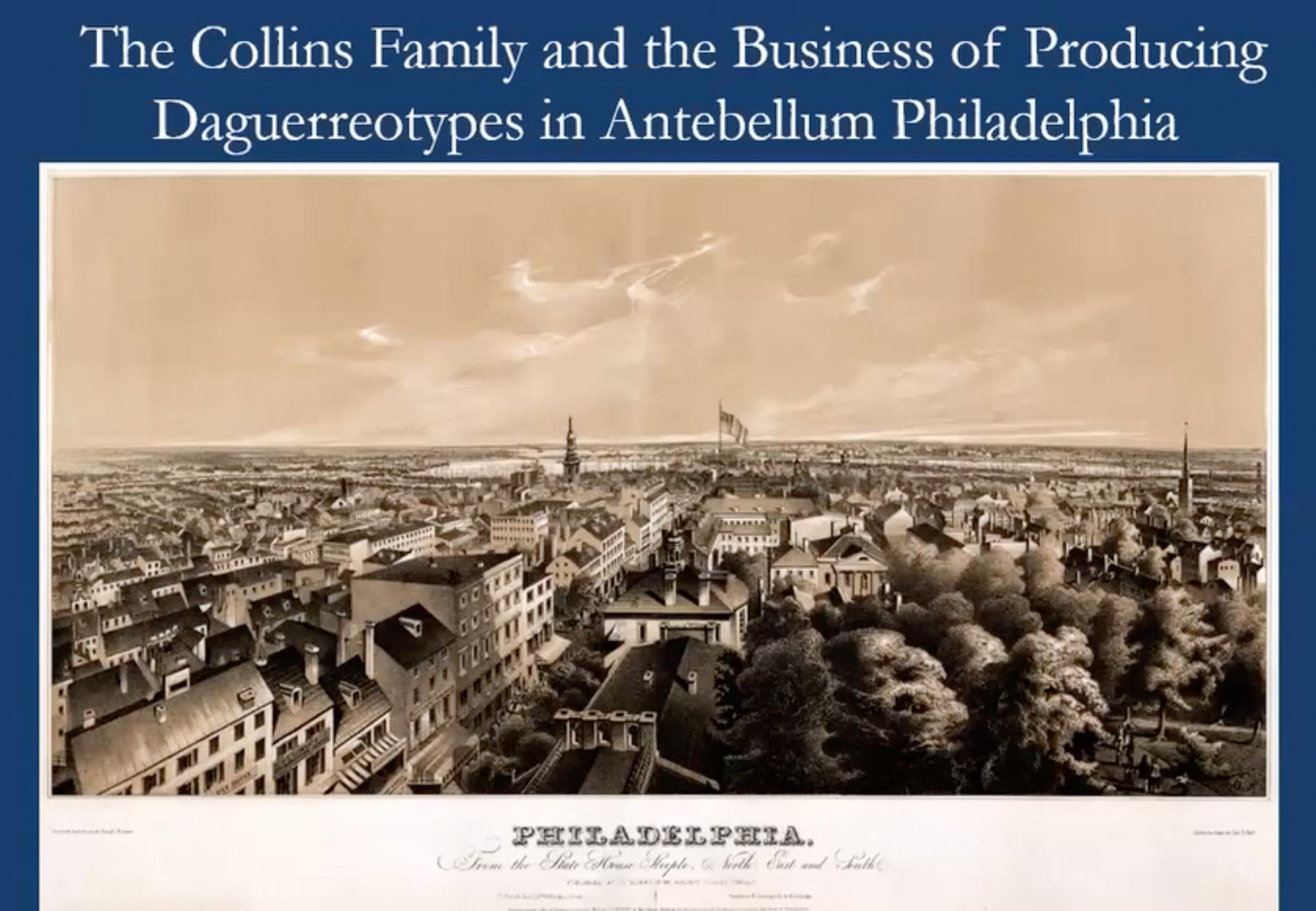- Home
- The Collins Family and the Business of Producing Daguerreotypes in Antebellum Philadelphia by Anne Verplanck (video)
The Collins Family and the Business of Producing Daguerreotypes in Antebellum Philadelphia by Anne Verplanck (video)
Description
This talk discusses the trajectory and work of the Philadelphia daguerreotype firm of T.P. and D.C. Collins.
To meet and create demand for a novel product, the Collinses depended in part on the introduction and timing of innovative methods and materials and corresponding capital expenditures. An analysis of their entrepreneurial and marketing strategies between 1845 and 1855 allows us to better understand how a small, urban business that employed limited technical improvements operated in an environment in which consumers increasingly prized innovation.
The firm’s difficulties in attracting and retaining daguerreotypists point to the challenges faced by all businesses that relied on skilled labor.
Although the Collinses operated in an environment in which they had ready access to the materials and knowledge needed for taking daguerreotypes and a significant, largely local and regional, clientele, their business ultimately failed. The attributes of their successes and failures contribute to an understanding of the roles of entrepreneurship, innovation, and marketing in small businesses in the middle years of the 19th century.
An analysis of the Collins firm also provides a useful counterpoint to the large, urban daguerreotype firms and the rural, often itinerant, practitioners in the United States, Britain, and Europe.
Anne Verplanck is an Associate Professor of American Studies at Penn State, Harrisburg. Her decades-long museum career included serving as the Curator of Prints and Paintings at Winterthur Museum from 2000 to 2009. In her museum and academic positions, she has curated exhibitions on and written extensively about 18th- and 19th-century American art. A graduate of Connecticut College, Verplanck earned her M.A. and Ph.D. degrees at the College of William and Mary.
Presented on September 26, 2020.


